Hundreds of thousands of Rohingya refugees have built makeshift shelters on steep, sandy hills in Bangladesh. They've fled what the U.N. has called ethnic cleansing in neighboring Myanmar.
Now they face a new danger in the unplanned camps that sprawl over 3,000 acres: The monsoon season is expected to start in April.
When the monsoon comes, bringing 20 to 30 inches of rain a month at their heaviest, aid officials worry that many of the hillsides where the Rohingya are living could collapse. There's also concern that hastily-constructed latrines could be flooded, contaminating the refugees' drinking water and sparking a major disease outbreak.
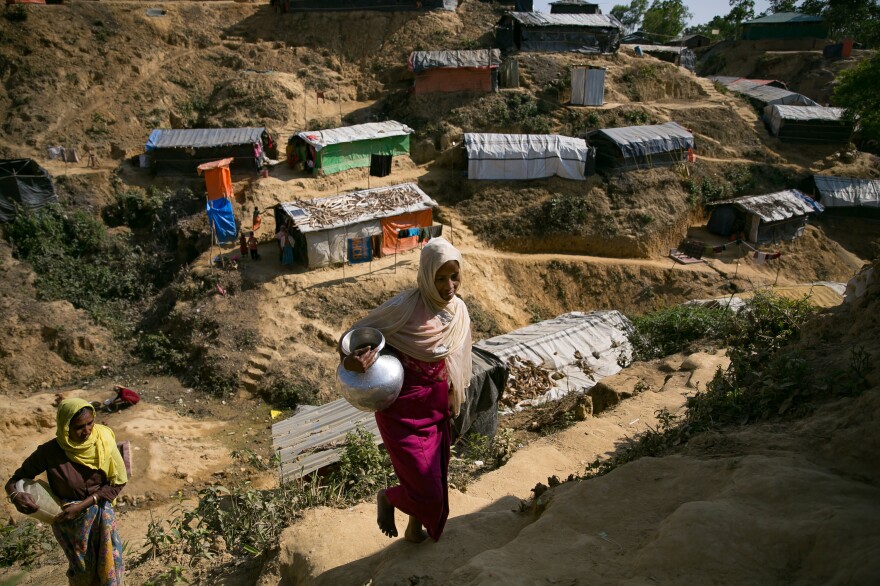
In the Balukhali refugee camp, 32-year-old Dil Bahar scrambles up a steep footpath hauling a large aluminum vase of water. The sandy track rises sharply in front of her. Shelters made of bamboo and black plastic cling to the hillside. Even now in the dry season, the dusty soil slips out from beneath Bahar's feet.
She says she has to climb this slope at least four times a day to get enough water for her family.
Aid officials fear that in a few months, her daily trek could get much harder — if not impossible.
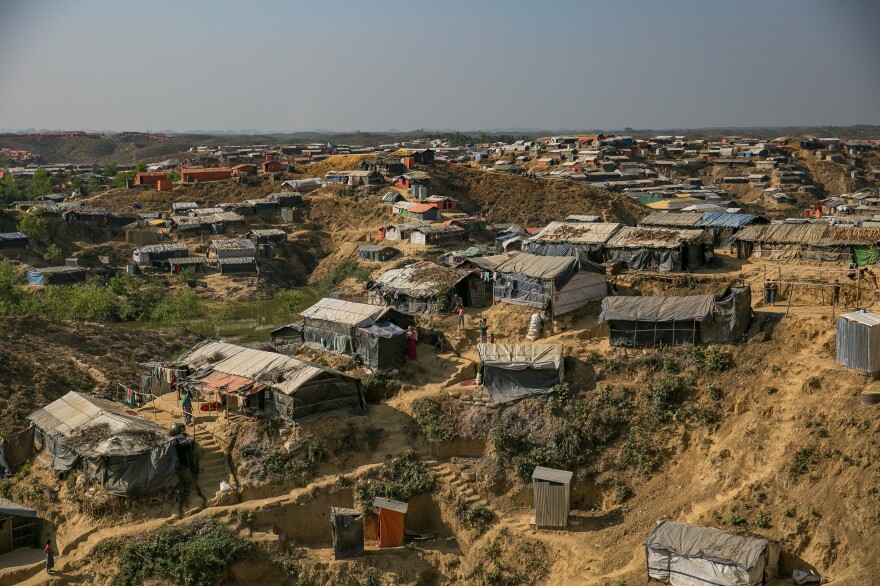
"There's not just a risk of landslides but we're expecting significant landslides," says Emmett Kearney, who works on water, sanitation and hygiene issues for UNHCR, the United Nations High Commission for Refugees, at the camp. Not only is the soil sandy, but the refugees have stripped almost all the vegetation to burn for cooking fires and even ripped out tree roots to use as fuel.
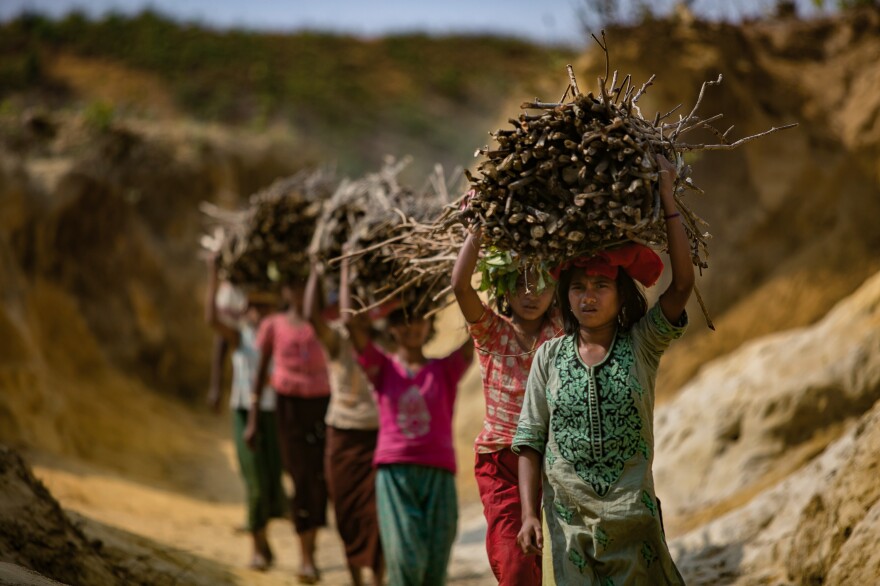

"You can see there are a lot of these slopes that are already at 40 or 45 degrees," Kearney says.
Hiss office has calculated that hills with a slope of 45 degrees or more have an 80 percent chance of collapsing.
Other reports have suggested that as much as a third of the refugee camp area could flood in a major deluge.
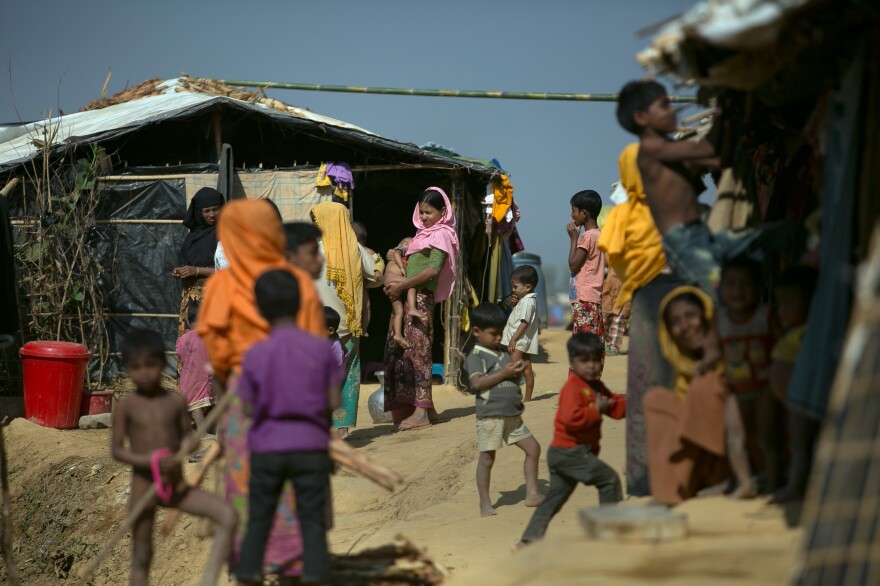
The logical solution would be to move the refugees but that's easier said than done. The camps are already densely packed. In many places there's barely enough space to walk between the shelters, never mind add more in the areas of relatively stable ground.
More than 800,000 Rohingya refugees are now living in a series of camps covering 3,000 acres. This includes many refugees who arrived years earlier. Three of the largest camps — Kutupalong, Balukhali and Thangkhali — bleed into one another and combined hold more than 600,000 people. Kutupalong alone, with 547,000, is twice the size of the second largest refugee camp in the world, the Bidi Bidi camp in Uganda. With the crush of refugees, the Rohingya camps grew spontaneously. Crude toilets and wells were dug with little or no planning.
In the Kutupalong camp, young boys bathe in a shallow stream. The kids lather up with soap, then do flips into the water. Kearny says the concern is that heavy rains will flood nearby outhouses and wash raw sewage into bodies of water like this one.
Not far from where the boys swim, Kearney points out a latrine that's starting to lean backward. "It's built on the edge of a hill. In the rainy season I expect it will be compromised," he says. "It could wash away quite easily."

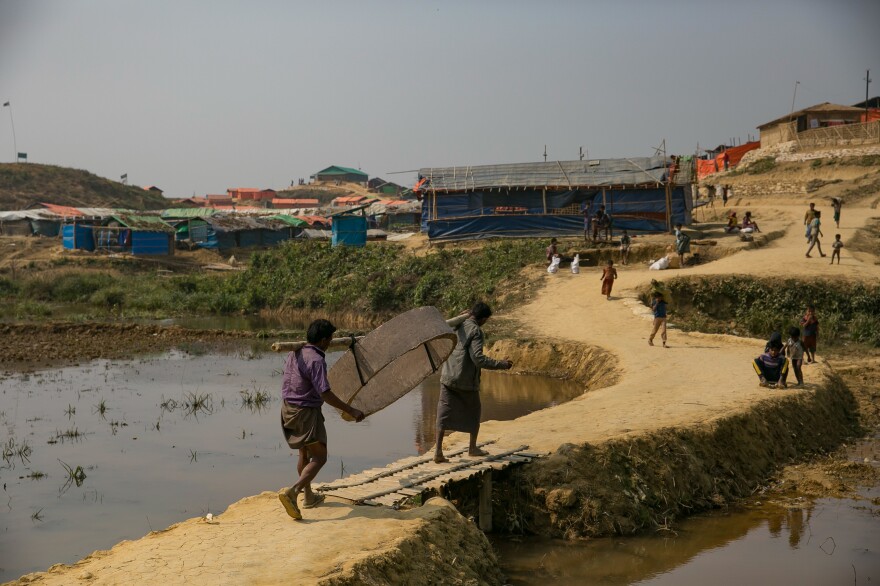
That's the other huge concern about the coming monsoons and these chaotic camps: In a deluge sewage will wash into the drinking water supplies of hundreds of thousands of refugees. There's the potential for a massive outbreak of cholera or another water-borne disease. There have already been large outbreaks of diphtheria and measles over the last few months.
Workers from UNHCR and other aid groups are building hundreds of additional pit latrines with cement holding tanks and walls. Deeper wells are being dug to try to tap into cleaner water 500-to-600 feet below ground.
Kearny at UNHCR says the challenge is to provide basic sanitation to a population the size of Denver before the camps turn into a muddy mess.
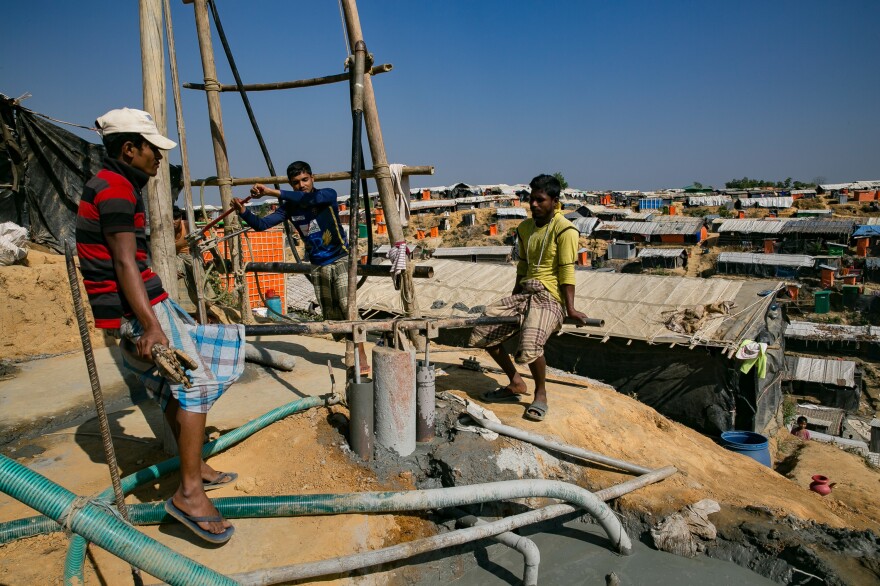
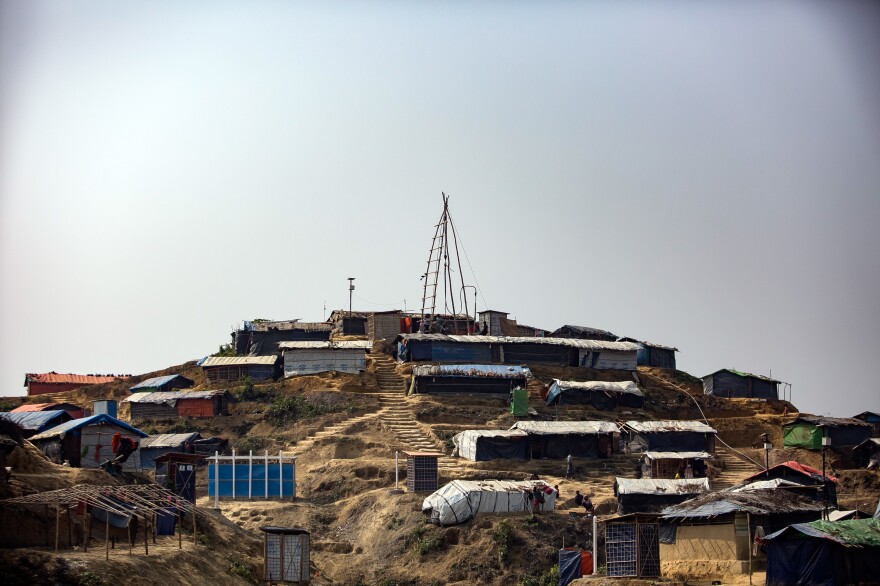
"You're looking at developing all the water sewerage infrastructure from scratch in the mountains, in the hills, without road access, without many materials. [It's] tricky," he says.
And it's not just aid groups working on toilets and drinking water that are worried.
The refugees aren't officially allowed to work in Bangladesh so they're almost entirely dependent on food rations from the World Food Program. Distributing those rations in the muck could be logistically difficult.
Officials from Doctors Without Borders, which runs several health facilities in and around the camps, are very worried about the coming rains.
"It's already difficult to walk around. The biggest part of the camp is only accessible on foot," says Marcella Kraay, project coordinator for the aid group in Kutupalong. "When it's going to be slippery and muddy and with landslides, it's going to be near impossible."
Kraay's teams are already dealing with dengue, which is mosquito-borne and could get worse if the camps are flooded. Hepatitis E and cholera could take hold. "With flooding going on waterborne diseases is something that we're expecting and trying to prepare for," she says. Severe outbreaks of diarrhea, she says, are a question of "not if but when."
Any new outbreaks would come on top of all the medical issues that Doctors Without Borders is already trying to address. Their hospital in Kutupalong has a malnutrition ward with 13 beds, and there's a child in every one of them. The outpatient clinic overflows with children with colds, adults with cuts and broken bones.
The pediatric ward is packed with kids suffering from diarrhea, pneumonia and other ailments. "We try to really keep the number of patients per bed to one but it's not always possible," she says, gazing into the ward where many of the beds have two kids in them.
The diphtheria outbreak, which has sickened thousands in the camps and claimed nearly three dozen lives, highlights another risk factor for the Rohingya — a lack of vaccinations.
Diphtheria outbreaks globally are quite rare because most people are vaccinated against it. Back in Myanmar, the long-persecuted Rohingya minority had little access to health care; many of them never got common childhood vaccinations. Kraay says from a health perspective all of this is a recipe for disaster.
"Access to clean water in the camps is limited," she says. "If you're standing on one of the hills every direction you look at is just mountains beyond mountains of shelters with many people living in them. It's really clear that these are not conditions that are sustainable and definitely not healthy."
And those are the conditions now — before the monsoon rains hit.
Copyright 2020 NPR. To see more, visit https://www.npr.org.



